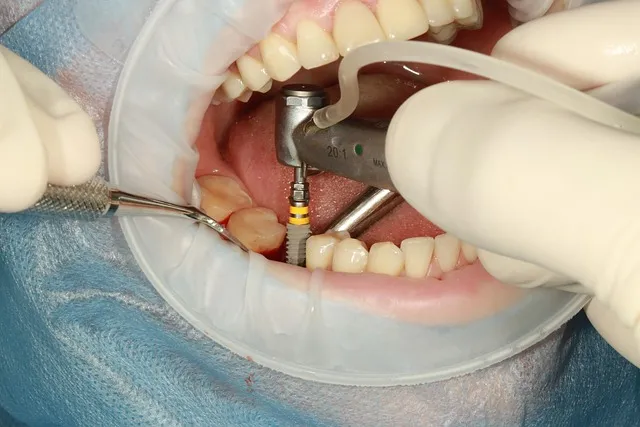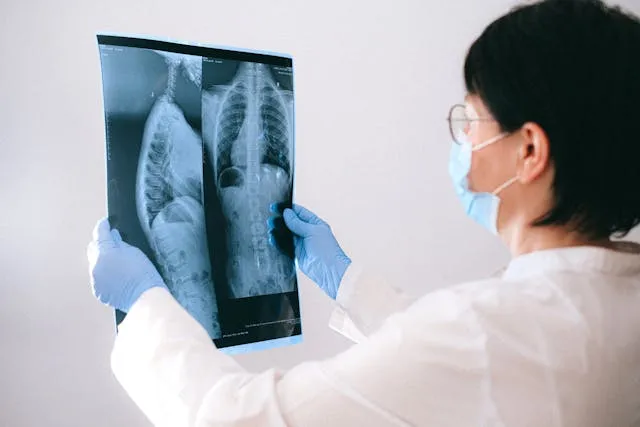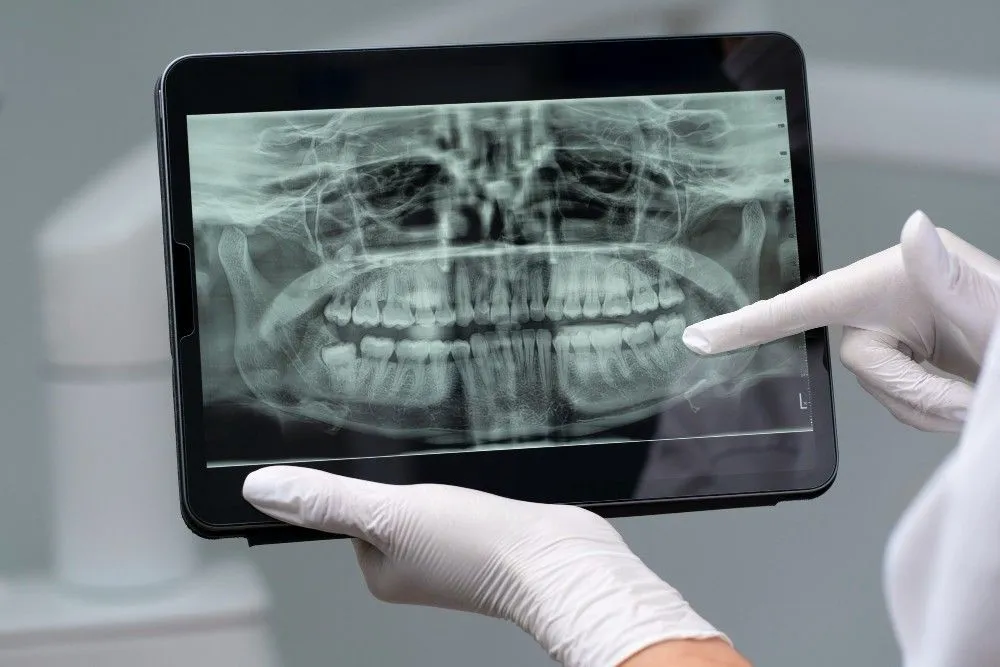Root canal treatment (RCT) is a common dental procedure performed to save an infected or damaged tooth. Though it is generally effective and safe, like every medical treatment, it also comes with certain side effects that you need to be aware of. From pain and swelling to infection, understanding the possible root canal treatment side effects can help promote healing and ensure successful results.
Let’s dive into the article and learn in detail about the side effects of RCT and how to minimize them.
5 Potential Root Canal Treatment Side Effects
Some people may experience these common side effects that are mild and temporary:
1. Pain & Discomfort
-
Cause: Some people may experience mild pain and discomfort which subsides within some days. This occurs due to inflammation in the tissues around the damaged tooth because of the procedure itself or infection.
-
Management: Over-the-counter or prescription painkillers can alleviate pain or discomfort.
2. Swelling & Tenderness
-
Cause: Some people may experience swelling and tenderness in the gum or face which slowly resolves with some days or a week. This commonly occurs due to a significant tooth infection that was present before treatment.
-
Management: If swelling worsens or lasts for a longer period, see a dentist. The providers may help with antibiotics to manage infection.
3. Infection
-
Cause: Although rare, some individuals may have an infection due to bacteria especially when the tooth was not incorrectly sealed or the infection was not completely removed during the treatment.
-
Management: Seek dental help if you experience infection signs such as fever, persistent pain, and swelling. Dentists may help with additional antibiotics or drainage.
4. Tooth Sensitivity
-
Cause: Sensitivity to cold or hot foods & drinks might occur because of irritation of tissues or nerves inside the tooth. It's a temporary problem that subsides gradually within a few weeks.
-
Management: Avoid cold or hot foods and drinks and use toothpaste formulated for sensitive teeth to reduce discomfort.
5. Tooth Discoloration
-
Cause: In certain cases, the treated tooth might become discolored with time. This may occur because of the changes in the pulp or used material during the treatment.
-
Management: Cosmetic options such as a dental crown or whitening can help restore tooth appearance if discoloration is more visible and bothersome.
Long-Term Complications of Root Canal Treatment
While most side effects of RCT are temporary, there may occur some rare, long-term complications (as a result of issues during the treatment or poor aftercare) that can create more problems. Those may include:
|
Complication |
Why it Happens |
What You Should Do |
|
Persistent Pain |
Occurs when dental professionals fail to identify cracks or additional canals or do incomplete cleaning, indicating infection or failed RCT risk. |
Immediately see a doctor for further treatment like pain medications, avoiding hard foods, or maintaining proper oral hygiene. |
|
Tooth Fracture |
Incorrect restoration of the tooth post-treatment can make it brittle and weak, leading to a risk of fracture. |
Have a filling or a permanent crown to strengthen the treated tooth. |
|
Reinfection |
Reentry of the bacteria in the treated tooth due to loose and damaged dental crown or filling. |
Consult the doctor for a second RCT. |
|
Allergic Reaction |
A study reports that becoming allergic to material such as gutta-percha utilized during the RCT can cause allergic reactions like swelling or difficulty breathing around the treated tooth. |
See a doctor immediately if you see the signs of allergic reactions. |
|
Nerve Damage |
Occur when the dental equipment comes extremely close to tooth nerves, leading to a tingling or numbness sensation in the treated area. |
Visit the providers for prescription medicines or surgical treatments like nerve decompression. |
Factors Increasing the Risk of Side Effects After RCT
These factors can raise the chances of side effects after RCT:
1. Severity of Infection
The long-lasting or more severe infection might contribute to increased swelling, inflammation, or complication during the recovery phase.
2. Complicated Root Canal Structure
A tooth with curved or more complex root canals is more challenging to treat thoroughly. This, in turn, can increase infection and incomplete cleaning.
3. Delayed Treatment
Taking a long time to treat your infected tooth can also contribute to further damage. This can also lead to an increased risk of issues after the treatment.
4. Poor Dental Hygiene
Not following good oral hygiene during the recovery phase can cause infections that need re-treatment. Additionally, it can lead to prolonged healing.
5. Weak Tooth Structure
If the tooth has been weakened by previous dental treatment or decay, it might be more susceptible to fracture or damage risk post-treatment.
6. Pre-existing Health Issues
Health issues such as weak immune systems or diabetes may raise the risk of infections and other complications. In addition, it may slow down healing.
7. Smoking
Smoking can disrupt the healing process of the body and raise the risk of complications post-treatment.
Actionable Tips to Prevent the Side Effects of RCT
Consider these tips to prevent the side effects associated with RCT:
-
Follow Post-RCT Aftercare: Make sure to closely follow all the advice regarding aftercare given by your doctor to facilitate healing.
-
Take Pain Medications as Directed: Use painkillers as prescribed to relieve swelling or discomfort and avoid overuse as it can lead to further complications.
-
Don’t Chew from Treated Tooth: Avoid chewing, especially hard foods from treated areas (until you have a permanent dental crown) to alleviate the risk of further damage.
-
Follow Proper Oral Hygiene: Brush twice and floss once daily to keep gums and teeth clean and healthy. Also, avoid sugary foods to prevent more tooth decay.
-
Attend Dental Check-ups: Regularly attend dental check-ups to ensure proper healing and early detection of any issues.
-
Quit Smoking: Avoid smoking during the recovery phase to prevent slow healing and high chances of an infection.
-
Consume Soft Foods: Eat soft, non-irritating foods like mashed potatoes, hummus, smoothies, etc., to avoid pressure or irritation on the treated area.
-
Get a Dental Crown (If Recommended): Placing a dental crown after RCT can help strengthen the tooth structure and prevent sensitivity, tooth fracture, and reinfection.
When to See Your Dentist
If you experience these symptoms post-RCT, seek immediate help from dental professionals:
-
Persistent or worsening pain
-
Severe swelling around the treated area
-
Signs of infection like fever, pus, etc.
-
Difficulty biting or chewing foods
-
Numbness or tingling sensation in the treated tooth
-
Allergic reaction signs such as swelling in the face
Alternatives for Root Canal Treatment
In case RCT is not the right option for you, dentists may help with these alternatives:
-
Tooth Extraction
In cases of extremely infected or damaged teeth, tooth extraction might be helpful. This can help prevent the infection from spreading and protect your overall dental health.
-
Pulp Capping
This preserves overly exposed pulp by removing a small amount of decayed tooth material and placing the protective covering over it. This lets the tooth heal itself, avoiding the need for RCT.
-
Dental Implants
It helps replace the infected tooth with a biocompatible or ceramic metal-free dental implant, improving dental health.
-
Apicoectomy
This is performed in case of failed RCT which involves removing the infected tissue at the top of the root and then sealing it properly.
Myths vs. Facts About Root Canal Treatment
Let’s debunk the myths about RCT with facts:
|
Myth |
Fact |
|
RCT causes systemic health issues |
No scientific evidence proves the association of RCT with systemic health issues like heart disorders or arthritis. |
|
RCT leads to toxicity |
This claim was based on old research which has been disapproved by modern scientific studies. Research reports that RCT materials are biocompatible (unharmful to living beings). |
|
RCT removes tooth roots |
RCT only removes the pulp, not the roots from the tooth. |
|
Extracting the tooth is better than RCT |
Saving the natural tooth and its function with RCT is better than extracting (which may take longer because of replacing the extracted teeth with implants or bridges). |
|
RCT requires several long appointments. |
With advanced techniques, RCT may be performed in 1-2 visits which may take 60-90 minutes based on the severity of the infection. |
Final Thoughts
Though a successful treatment, there are some potential root canal treatment side effects that you need to be aware of. Some side effects are mild and temporary while some are serious (in rare cases) that can be managed within some days or weeks with a dentist's help. To minimize the risk of side effects, it's crucial to strictly follow post-treatment instructions, maintain good oral hygiene, and attend follow-up appointments. This will ensure a smooth recovery and better outcomes, thus preserving your dental health.
Read Also: How to Know Whether Your Tooth Needs An RCT Or Not?
Frequently Asked Questions
Do root canal treatments hurt?
No, they are typically not painful. With anesthesia and modern techniques, dentists can ensure minimal pain or discomfort during the treatment.
What happens if an old root canal gets infected?
You can feel pain and discomfort that need re-treatment to properly manage the infection.
How long does it take to heal from a root canal treatment?
It may take 1-2 weeks to heal from RCT, but the timing can vary based on the complexity of the treatment and the healing ability of an individual.
Can root canal treatment cause long-term pain?
Yes, but in rare cases due to nerve damage, improper filling, or incomplete infection removal.
Reviewed by







